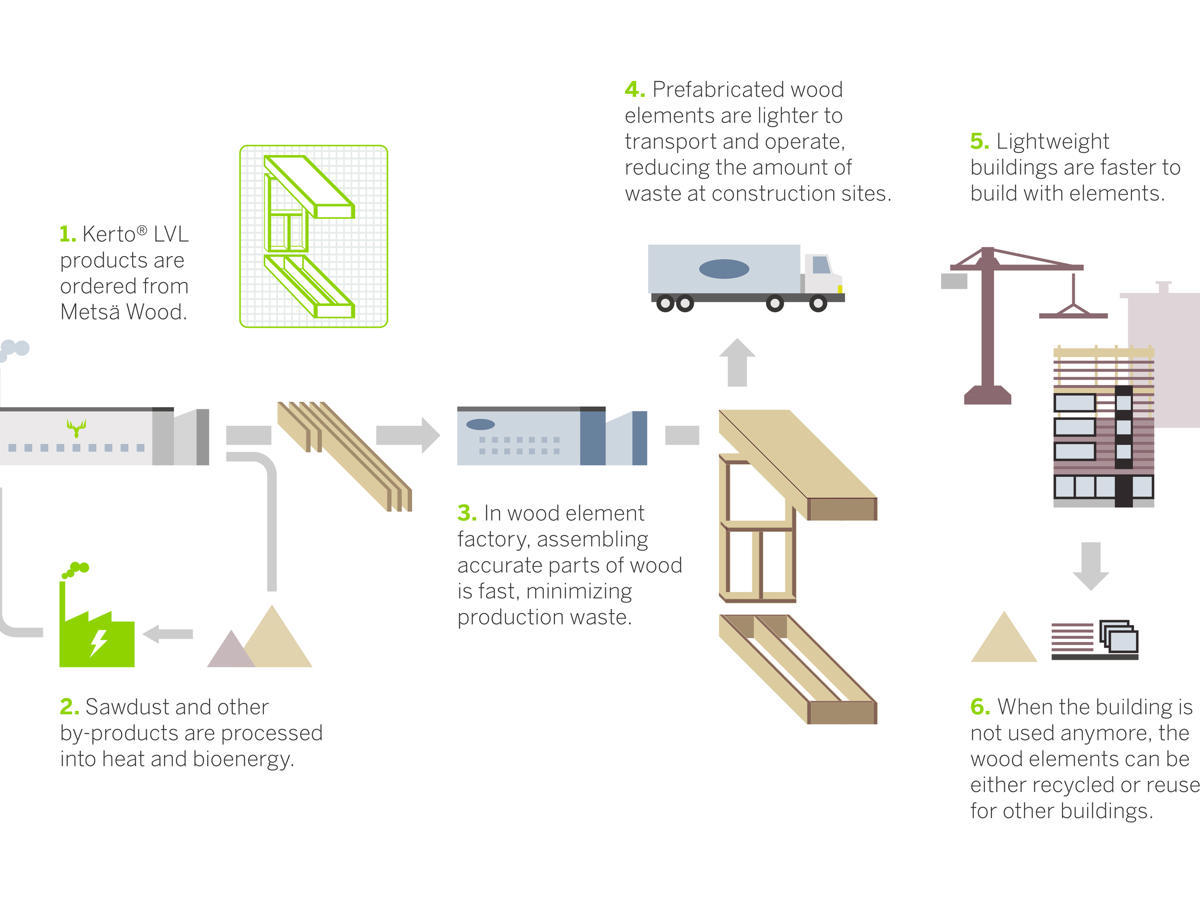As the construction sector continues consuming globally around one third of the planet's already limited resources, the shift to more sustainable building and closed material loops becomes increasingly necessary. Within the building materials sector, the production of steel and aluminium alone require around 51% and concrete production around 17% of the energy for producing all building materials globally.
“We need a shift from unsustainable consumption patterns without delay. Increasing the use of sustainably sourced wood in construction is a much-needed step in the right direction. Wood is currently the only renewable building material that we can create load bearing structures from. As a co-benefit, non-renewable raw materials such as steel and cement, can be saved or used for more value-added purposes. Furthermore, studies have shown that our forest management has potential to increase its biodiversity while still creating biomass for the industry, storing CO2 and producing oxygen. Therefore, wood is currently the only full range building material that has the potential to become truly sustainable and probably the best answer for solving emission problems in the construction industries,” says architect Kristoffer Tejlgaard from Atelier Kristoffer Tejlgaard in Denmark.







